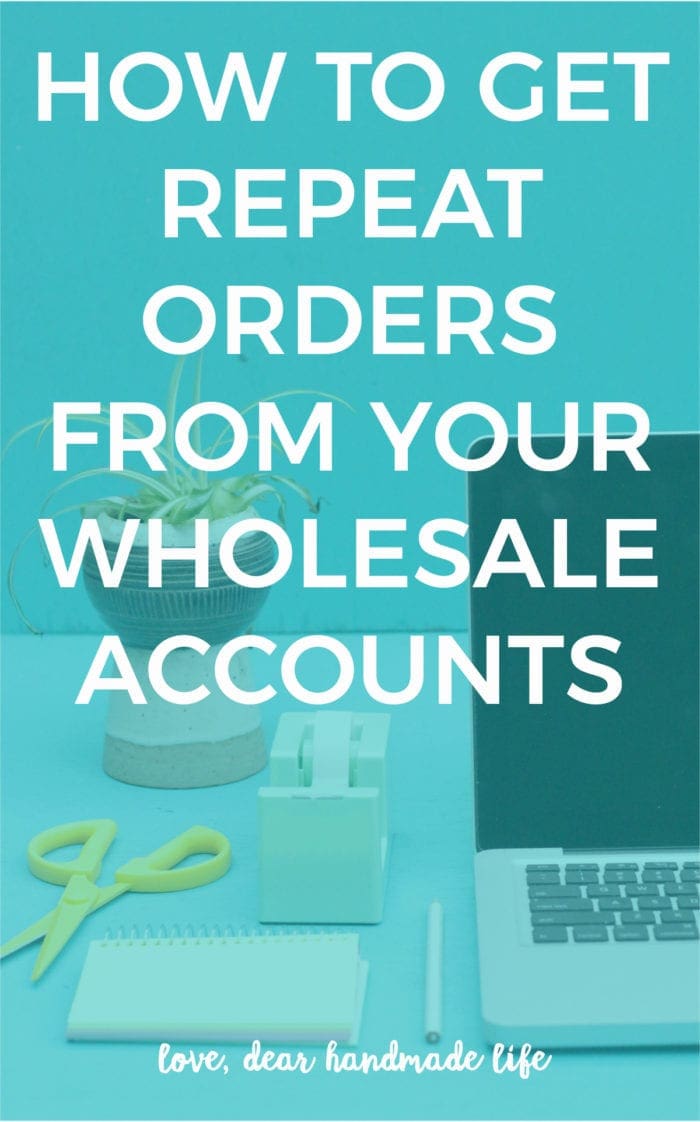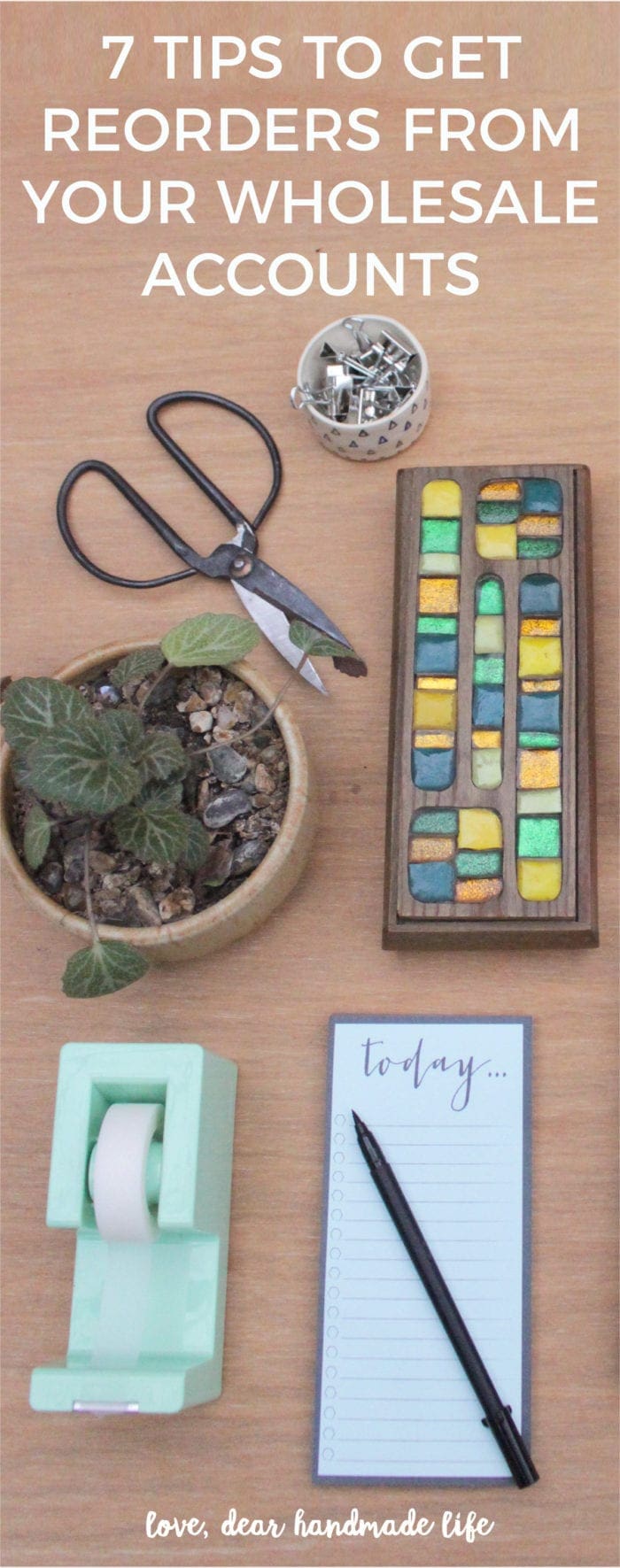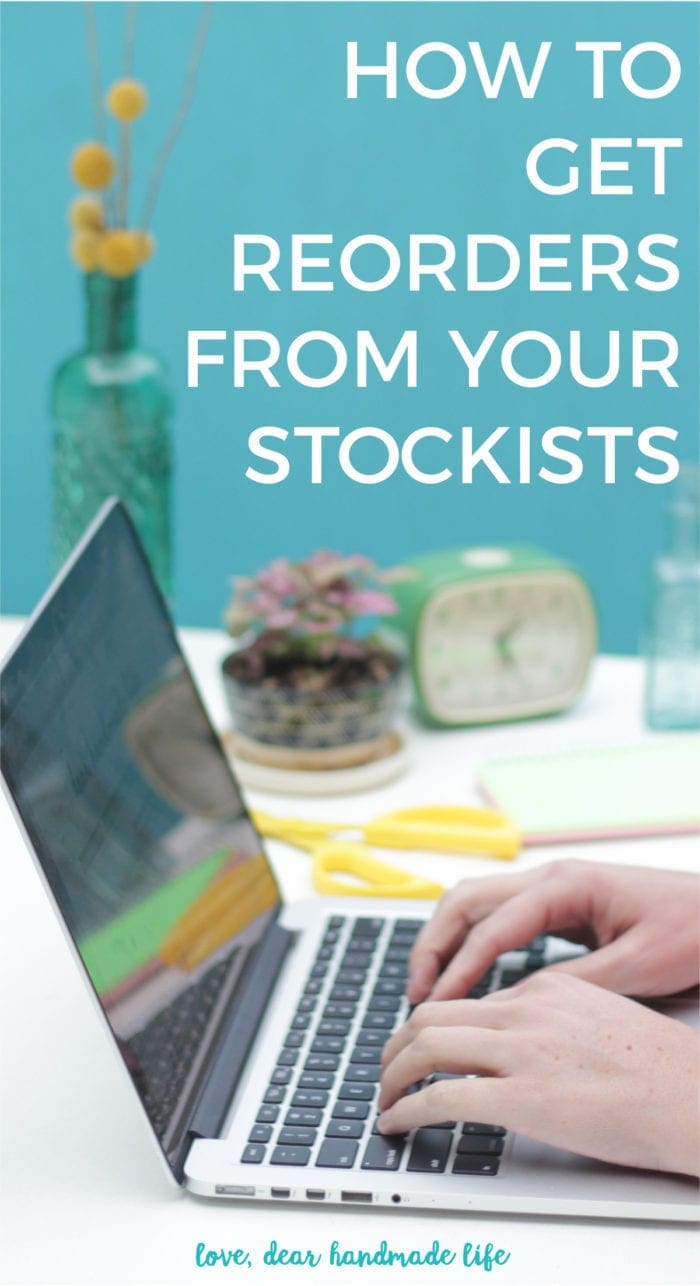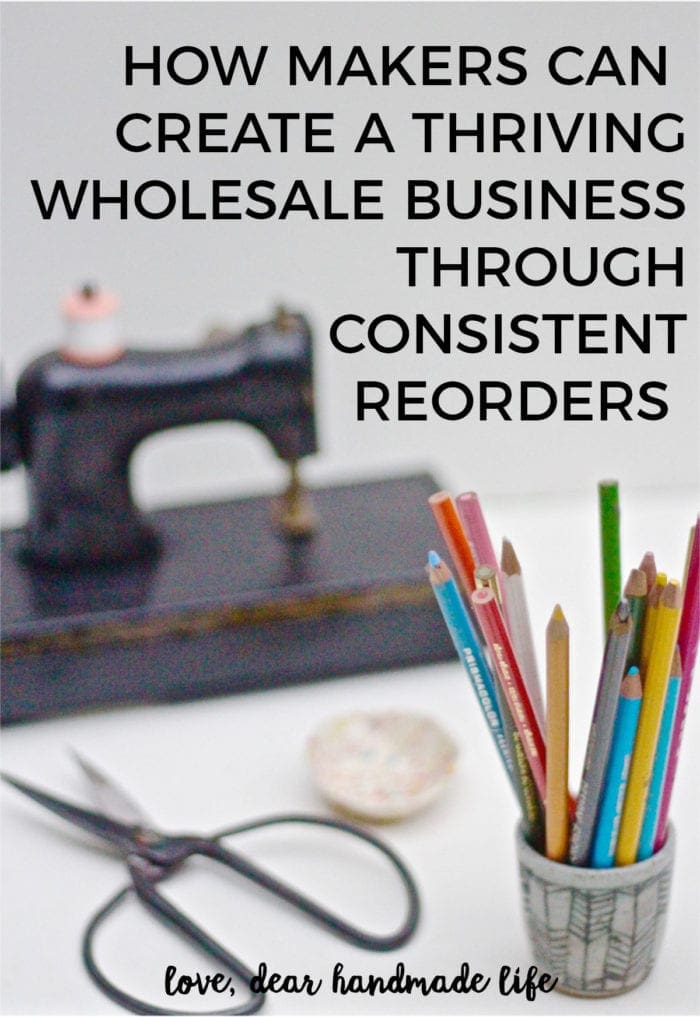How to Get Reorders from Your Stockists
How to Get Reorders from Your Stockists
By: Emily Kerr-Finell of Wholesale in a Box
Editor’s Note: This post was shared with us by Etan and Emily from Wholesale In a Box. They offer makers a method to get into stores — and tools to make growth easier and faster. You can sign up for a free eCourse on their method for growing wholesale (without trade shows, hassle, or stress) here. -Nicole S.
Before they get their first store, most handmade business owners are focused on how many store accounts they want to get. They dream of having wholesale accounts around the country, with their products sparkling on hundreds of store shelves.
But after the first couple of stores are under their belt, many people realize that not all wholesale accounts are created equal. The store in Milwaukee that orders $800-$900 every quarter is worth so much more than the store in Tulsa that ordered $1,000 once and hasn’t placed an order since.
Sometimes stores don’t reorder because of something on their end. Some shops are struggling financially or changing business models and aren’t going to place follow-on orders with you for those reasons. But the majority of the time, a given store is placing consistent, large orders with some makers — and it is up to you whether you are one of them.
We’ve written more generally about the fundamentals of how to cultivate stockist reorders, and today we want to zoom in on really specific strategies. So if you are in one or more stores, and you’d love to have those stores order more, you will be equipped to make that happen.
Seven key strategies for cultivating reorders from stockists:
1. Manage your mindset.
Many makers feel like they are at the mercy of store owners. The shop owner places an order or she doesn’t and there isn’t much you can do about it. So my first suggestion is to change your mindset. The reality is that a lot of the dynamics around reorders are in your control to affect. You certainly can’t impact every factor but you can give yourself the best chance of success by shifting your mindset from a passive one to an active one. When store owners don’t place reorders, consider whether there is anything you could do differently to impact that.
2. Make it easy.
The highest impact thing you can do is to make it easy for shop owners to place follow-on orders. When you email them, make sure that you provide ordering instructions and links rather than assuming they have that saved your info. Circle back with them fairly frequently so that if they do want to place an order, they don’t have to hunt to find you. Make your wholesale ordering process simple and streamlined, with as few steps as possible.
3. Be in touch.
Nine out of ten makers ship a wholesale order and then “don’t bother” the store owner after the order ships. On the store owner’s end, however, I often hear, “They sent me an order and then just kind of disappeared. I might have placed another order but they never followed up and I don’t have their info handy.” If a store has ordered from you and they haven’t told you that they’ve decided not to order moving forward, then assume that they’re open to it. Be in touch every season to check in and share updates.
4. Have something new to share.
Speaking of updates — store owners often love new things. Their customers come in the shop when there is something new to check out, so it’s attractive to them to be able to put a beautiful new product on the shelves. Keeping your line lean, dropping products that don’t work, and adding new products that you think are great are wonderful ways to make your line most attractive to busy shop owners. It can be great to put yourself on a new product development schedule so that you can count on having something new to share frequently.
5. Put them first.
It’s a wise practice to keep your store owners updated just before your broader community. Tell them first about updates to the line, new products, new prices, or deadlines. It shows a level of respect and organization that is often appreciated. Similarly, you should think through the wholesale unboxing experience. It’s smart to do little things with the packing, box, and what you put in the box so that the store owner feels like they’re opening a present every time they get an order.
6. Make space in their store for your product.
Offering a display for your product certainly isn’t mandatory, and isn’t something that will work for all lines. But if it does make sense for your line, offering a store display can be a fantastic way of making sure your product is top of mind. As store owner Mary Claire White shares, if she sells out of a product (that’s a good thing!) it’s gone from the shelf and gone from her mind unless the product has an empty display. If it does, it sits there as a reminder that it’s time for a reorder. So by providing a display, you’re literally making space in their store for your product.
7. Tell your story for them.
People shop at independent boutiques because they believe in the stories of the products they can find there. It’s something different, it’s something that they can stand behind. So if you equip store owners with a narrative that they can share with their customers, then they’ll usually sell more (meaning, more reorders on your end.) You can share that narrative with a card or sheet in each order, or with stylish signage you include for display.
This is one of those areas of business where the “smart thing” is also the “right thing.” When you take care of your stockists in these ways, your wholesale business will thrive — but you’ll also know that you’re being generous and connective with like-minded store owners. Will every store that you treat this way order dozens of times from you? No. But you can cultivate many, many of them to be strong customers and strong friendships.





